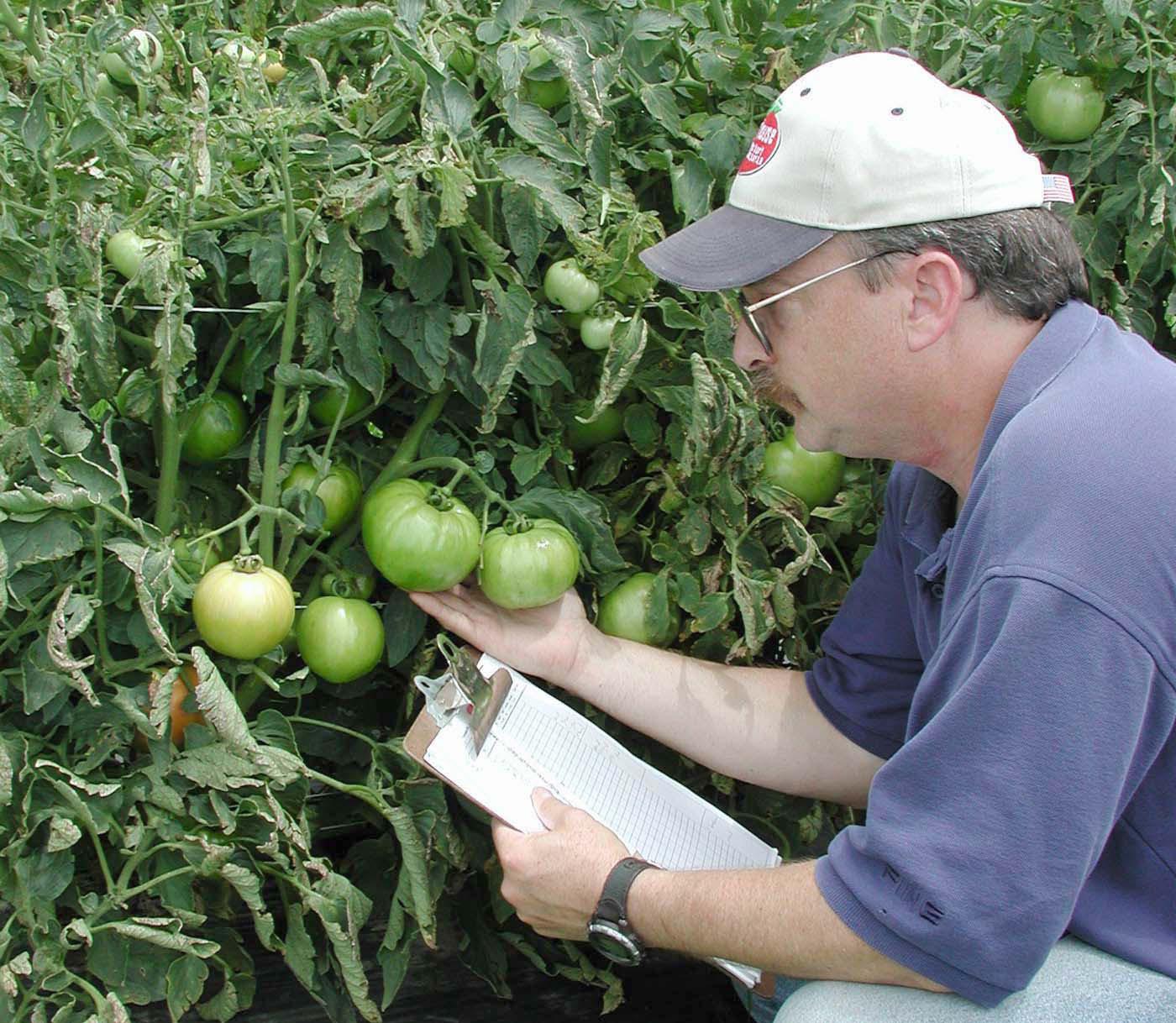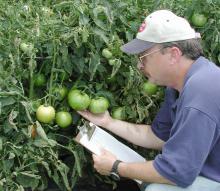Information Possibly Outdated
The information presented on this page was originally released on July 16, 2004. It may not be outdated, but please search our site for more current information. If you plan to quote or reference this information in a publication, please check with the Extension specialist or author before proceeding.
Tomatoes battle through season
MISSISSIPPI STATE -- Diseases have challenged Mississippi tomatoes throughout the 2004 vegetable season, forcing growers to work harder to produce adequate yields and quality.
Rick Snyder, Mississippi State University research and Extension horticulturist in Crystal Springs, said the rains and high humidity triggered more disease problems this year than normal. Tomato spotted wilt virus, which is impacted by thrips populations rather than weather, was especially challenging.
"Tomato spotted wilt virus tends to be worse some years than others. This was definitely one of our worse years," Snyder said. "There is no treatment for this virus since no one can effectively eliminate all the thrips. There are always host plants for thrips in and near gardens."
Tomato fruit infected with spotted wilt virus will have irregular yellow blotches and be unfit for consumption. Growers should remove and destroy infected plants and try to minimize weeds in and around gardens to reduce the movement of virus-spreading thrips.
Snyder said excess rains contributed to root and stem diseases that growers had to treat aggressively. Tomato early blight is one of the more serious fungal foliar diseases faced by gardeners each year. Commercial producers begin fungicide applications soon after transplants are set out and continue at seven- to 10-day intervals throughout the growing season and after rains.
David Ingram, Extension plant pathologist in Raymond, said commercial growers work hard each year to establish insect and disease prevention programs.
"It is much easier to be aggressive in pesticide programs to prevent problems rather than treat problems once they occur," Ingram said.
The frequency of the rains were Mel Ellis' biggest challenge in controlling early blight on the Mayhew Tomato Farm in Lowndes County.
"There are some good fungicides available to control early blight, but you just can't spray with rains like we were having," Ellis said. "The bigger problem on our first crop was the lack of sunshine. We had 22 out of 30 days that were mostly overcast, and it is hard to get good pollination and fruit set with overcast days."
Ellis said his midsummer crop is producing an average yield. The late-season crop is starting to develop, but he said it is too early to predict its success.
Charles Waldrup, Smith County director for MSU's Extension Service, said growers have had to work hard to produce this year's tomatoes. In addition to the cost of production, growers have also faced labor challenges in recent years.
"Harvest costs are the highest expenses for producers, depending on the amount of family labor involved. Labor costs have increased significantly in the last several years," Waldrup said. "Finding workers has become much more difficult. All the Smith County labor is local."
Waldrup said demand for tomatoes helped keep prices for locally grown fruit steady during the first part of the season, contrary to the predictions for an off-market in 2004. Prices began their traditional decline as the season progressed.






